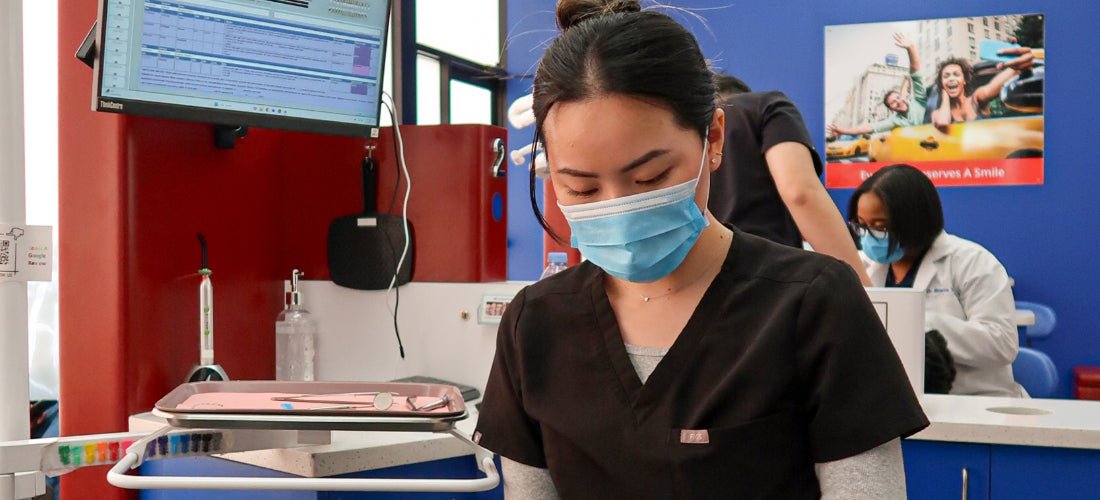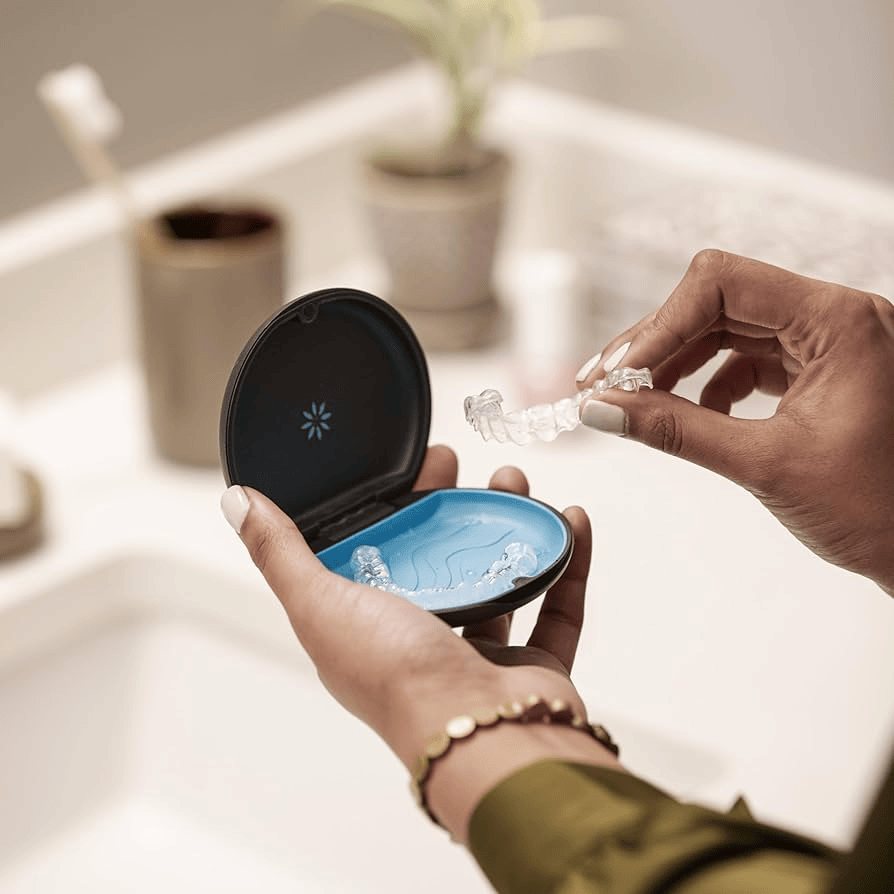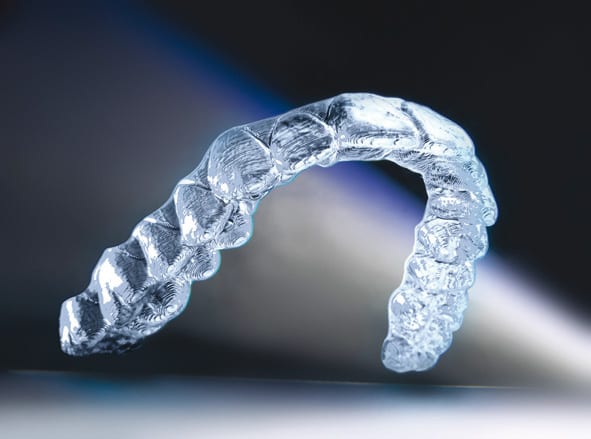Dental assistants are essential team members in any dental or orthodontic practice. Their duties span clinical, administrative, technical, and compliance-related functions.
Table of contents
Orthodontic Dental Assistant Duties
Day-to-Day Operational Workflow
The daily responsibilities of a dental assistant begin before the first patient arrives. Throughout the day, they alternate between procedural support and documentation, ensuring seamless clinical transitions and regulatory compliance. Their workflow directly impacts appointment efficiency and patient satisfaction. A dental assistant job description will often reflect responsibilities in both patient-facing and technical domains.
Prepare treatment rooms, sterilize instruments, and review patient charts before appointments
Assist chairside during procedures by passing instruments, managing suction, and documenting care
Support administrative tasks such as scheduling, insurance verification, and patient intake
Sterilization and Infection Control
Instrument Handling and Compliance Protocols
The sterilization assistant oversees infection control across the operatory. This includes high-level instrument sterilization using autoclaves, ultrasonic cleaners, and chemical disinfectants. Trays must be assembled with care to meet each procedure’s specific toolset.

Preventive Measures and Equipment Readiness
Dental assistant infection control procedures involve PPE setup, operatory wipe-downs, waste disposal, and compliance with CDC and OSHA standards. Assistants must manage sharps protocols, surface barriers, and confirm that dental instruments and tools are properly processed and stored.

Patient Prep and Procedure Support
Dental assistants are directly involved in managing the clinical environment before, during, and after patient appointments. Their responsibilities in patient preparation and procedural support ensure that treatment rooms are properly set up, patients are informed and positioned, and the provider has immediate access to required tools and materials. This role is essential to maintaining efficient case flow and upholding clinical standards in both general and orthodontic practices.
Patient Flow Management
Before each procedure, assistants complete a dental assistant daily checklist that includes stocking materials, prepping instruments, confirming sterilization indicators, and reviewing the patient’s medical history.
Support During Procedures
During treatment, assistants help with taking dental impressions, passing instruments, applying suction, and documenting treatment in the EHR. Post-procedure, they are responsible for sanitization, restocking, and prepping for the next appointment.

Diagnostic Imaging and Specialized Tasks
Imaging Certification and Radiography Tasks
In most U.S. states, dental assistants must hold radiography certification to take x-rays. Tasks include patient positioning, equipment calibration, and capturing intraoral or panoramic images. Accurate diagnostics rely on clear imaging and adherence to safety protocols.
Clinical Charting and Procedure Notation
A charting dental assistant enters data directly into the patient's digital chart, including treatment codes, notations, and follow-up instructions. This requires familiarity with CDT codes and EMR platforms.
Terminology and Chart Interpretation
Dental assistants are expected to accurately interpret and record clinical findings using standard dental terminology and charting symbols. A strong grasp of charting protocols is essential not only for effective communication with providers but also for maintaining legally sound documentation and supporting continuity of care across visits.
Charting responsibilities often include:
- Identifying tooth surfaces and numbering systems (Universal, Palmer, or FDI)
Recognizing and documenting existing restorations such as crowns, fillings, and bridges
Recording periodontal measurements (e.g., probing depths, recession, bleeding points)
Marking carious lesions , impacted teeth, or areas requiring monitoring
Using CDT (Current Dental Terminology) codes to support accurate treatment billing and insurance claims
Updating records with treatment notes, observations, and progress tracking
Knowledge on Abbreviations and Software Codes
Assistants must also be familiar with abbreviations commonly used in dental software and handwritten notes (e.g., "MOD" for mesio-occluso-distal, "RCT" for root canal therapy). Whether using paper charts or digital platforms like Dentrix or Eaglesoft, precise charting ensures:
Clinical accuracy during multi-provider handoffs
Legal compliance in documentation
Reduced risk of insurance claim denials
Streamlined workflow for future appointments
Proficiency in chart interpretation and notation is a baseline expectation in most dental settings and often part of practical assessments during dental assistant certification exams.
Administrative and Front Office Work
Dental assistants often perform front desk duties, including appointment scheduling, insurance verification, intake paperwork, and phone communication. In smaller practices, they also handle back office responsibilities such as lab coordination and record management.
Insurance Verification and Preauthorization Support
In many practices, dental assistants are trained to assist with verifying patient eligibility and securing approvals for treatment plans, particularly in ortho and oral surgery cases.
Tasks include:
Contacting carriers to verify active coverage and annual limits
Checking benefit breakdowns for orthodontic treatment or x-rays
Entering group/policy info into the PMS (e.g., Dentrix, OpenDental)
Flagging procedures that require prior authorization or referrals
Appointment Scheduling and Calendar Management
Dental assistants often manage the provider’s schedule to ensure optimal patient flow and time efficiency. This requires attention to treatment length, and provider availability.
Tasks include:
Coordinating routine cleanings, procedures, and follow-up visits
Reducing no-shows with reminder systems and recall calls
Strategically blocking out time for high-value or urgent procedures
Adjusting same-day or emergency appointments around treatment capacity
How Do Dental Assistants Prepare Patients?
Dental assistants prepare patients by reviewing medical history, explaining procedures, positioning them for treatment, and ensuring that all necessary tools and materials are ready before the dentist begins.
Can Dental Assistants Take X-Rays?
Yes, dental assistants can take x-rays, only if they are certified by the appropriate state board or national credentialing agency (e.g., DANB). Certification may be required for intraoral radiographs, panoramic scans, or cone-beam CTs, depending on the practice type.
Do Dental Assistants Work at the Front Desk?
In many practices, especially smaller ones, dental assistants cross-train to support front desk operations. This includes managing calendars, greeting patients, collecting payments, and coordinating lab cases and referrals.
Do Dental Assistants Need Math?
Yes. Dental assistants are expected to perform basic math calculations involving dosage measurements, ratio mixing for dental materials, and interpreting spatial relationships in imaging. Proficiency in math directly supports patient safety.
Do Dental Assistants Clean Tools?
Yes. Dental professionals are responsible for cleaning, disinfecting, and sterilizing reusable dental assistant instruments. They also ensure that disposable items are properly discarded and that operatories are prepared according to CDC and OSHA guidelines.
Conclusion
The duties of a dental assistant span across clinical care, sterilization, patient engagement, diagnostics, and administrative coordination. Mastery of these responsibilities not only supports the dentist but also directly contributes to patient safety, procedural efficiency, and regulatory compliance.
For those considering a role in dental or orthodontic care, understanding these niche-specific tasks is essential to succeeding in the profession.






